Trees Birds Mammals Fish Amphibians Reptiles
Wild Algarve
Bookshop
Lysimachia nemorum - Yellow Pimpernel
Phylum: Magnoliophyta - Class: Equisetopsida - Order: Primulales - Family: Primulaceae
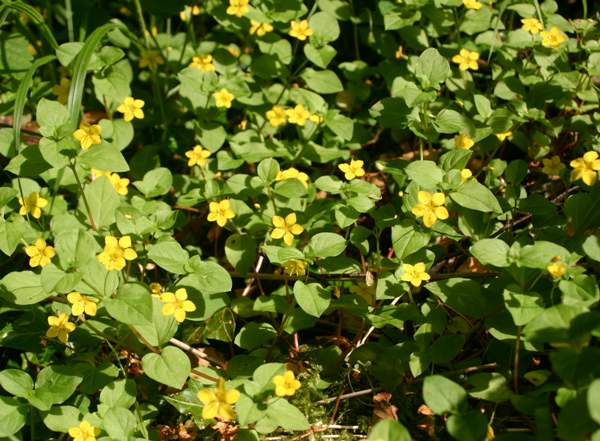
Very similar in form to the familiar wasteland wildflower Scarlet Pimpernel, this yellow-flowered perennial plant is rather less well known.
Description
Yellow Pimpernel has flowers typically 1 to 1.5cm across with sometimes four but most often five pointed petals and long pointed sepals. The heart-shaped opposite leaves are short stalked and broadly ovate. Mainly a creeper, Yellow Pimpernel can grow to 40cm, but 15 to 25cm is more typical.
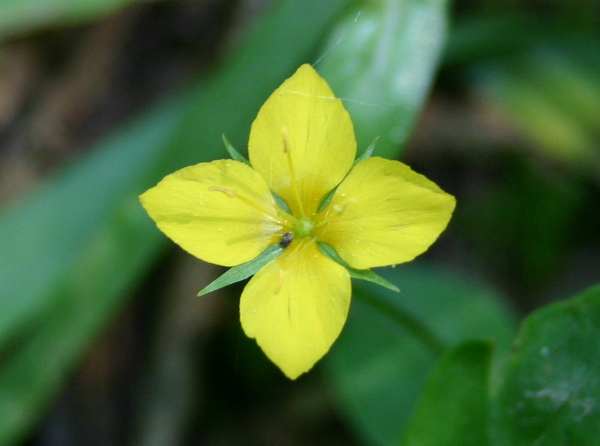
Above: Yellow Pimpernel flowers usually have five petals; this one is unusual in having only four.
Distribution
Yellow Pimpernel is native to Britain and Ireland, where it is fairly common except for in very dry areas. This wildflower can also be found across much of northern and central Europe and in a few isolated spots in the Mediterranean region too.
Habitat
Unlike Scarlet Pimpernel, which thrives in full sunshine, Yellow Pimpernel is mainly a plant of shady places, and it does particularly well in damp deciduous woodlands and on the verges of tree-lined country lanes.
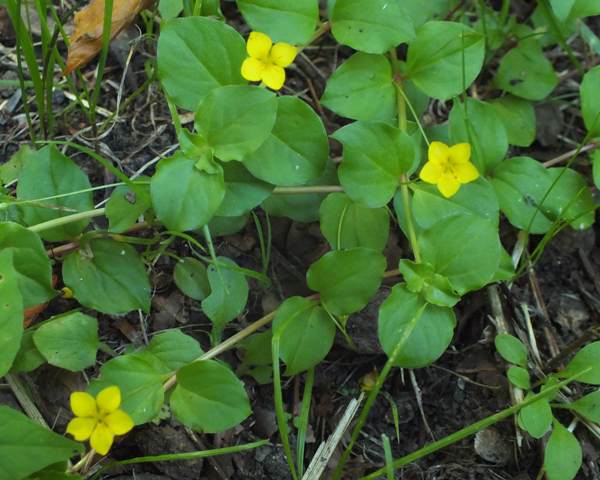
Above: four- and five-petalled flowers of Yellow Pimpernel, deciduous woodland, northern France
Blooming Times
The first flowers of Yellow Pimpernel appear in May, but it is usually late June before this plant is in full bloom. You might still find Yellow Pimpernel in flower as late as the end of August.
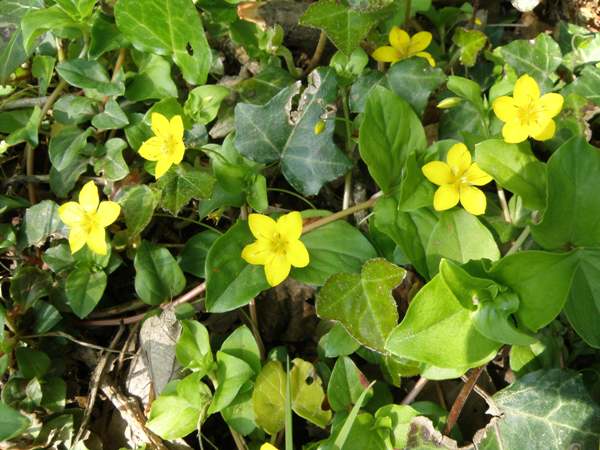
Uses
Yellow Pimpernel is not listed among the most useful of edible plants or as a great medicinal herb, although it has been used in the past as an astringent to staunch bleeding wounds. (We strongly advise against eating or using as medicines any plants without first obtaining qualified professional advice.)
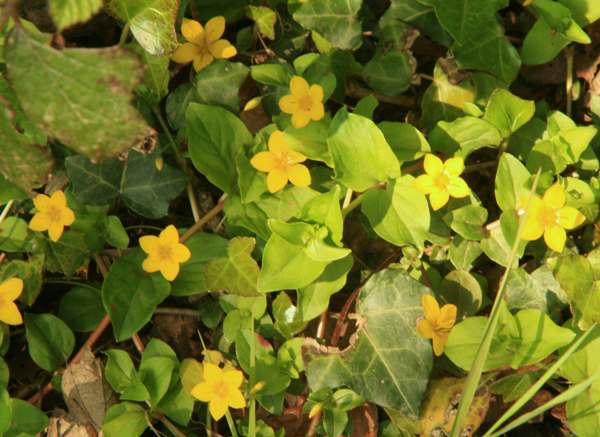
Etymology
Lysimachia, the genus name, is in honour of Lysimachus, (c. 360BC - 281BC), a Macedonian general who, as one of the successors to Alexander the Great, became ruler (king, in effect) of a large part of the divided Macedonian Empire that had all been Alexander's realm.
King Lysimachus is reputed to have fed 'loosestrife' plants from this genus to his oxen in order to calm them down whenever they became agitated and difficult to manage.
The name Loosestrife means 'lose (or forget about) strife'. (Another common name for this wildflower is Creeping Yellow Loosestrife.) No worries, then!
The specific epithet nemorum comes from the Latin nemorus and means 'of the woods'.
Similar Species
Yellow Pimpernel is often confused with one of its close relatives, Creeping Jenny Lysimachia nummularia, but Yellow Pimpernel has much smaller flowers with pointed rather than rounded petals.
The Yellow Pimpernel plants shown on this page were photographed in West Wales and northern France during June, July and August.
Sue Parker's latest ebook is a revised and enlarged edition of Wild Orchids in The Burren. Full details here...
Buy it for just £5.95 on Amazon...
Sue Parker's new ebook is a comprehensive and fully revised edition of her acclaimed field guide to the Wild Orchids of Wales. Full details here...
Buy it for just £5.95 on Amazon...
Please Help Us: If you have found this information interesting and useful, please consider helping to keep First Nature online by making a small donation towards the web hosting and internet costs.
Any donations over and above the essential running costs will help support the conservation work of Plantlife, the Rivers Trust and charitable botanic gardens - as do author royalties and publisher proceeds from books by Pat and Sue.